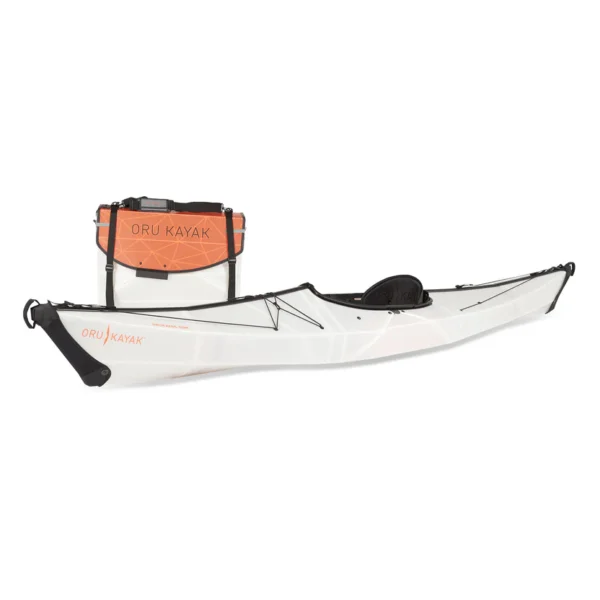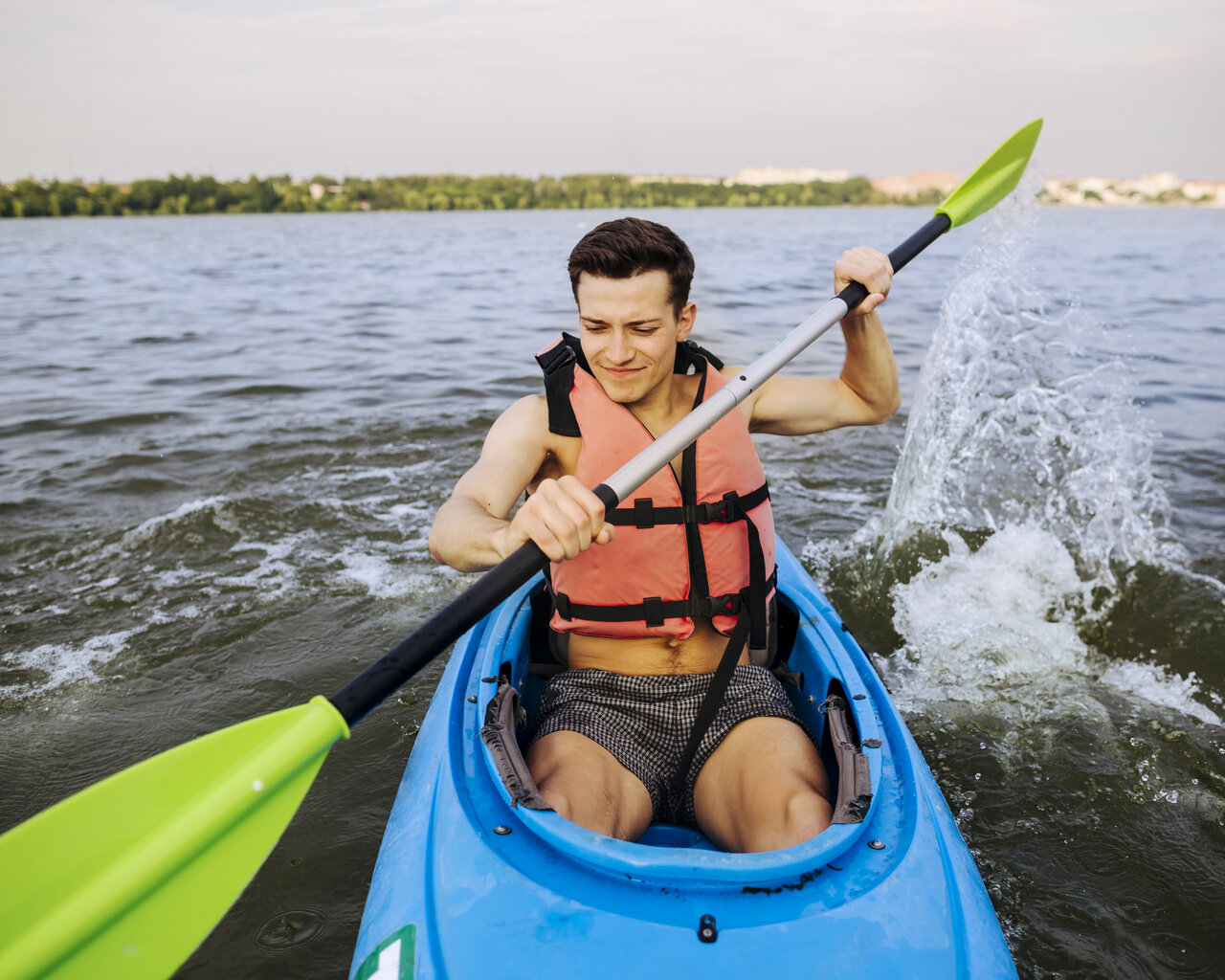Looking for the best lightweight kayak so that you won’t struggle with a heavy kayak to the water’s edge!
Many outdoor enthusiasts and adventure seekers share the same challenge. Heavy kayaks can turn an exciting trip into a cumbersome task. Most kayakers goes for kayaking where it isn’t burdened by the weight of your vessel.
You’ll discover the 13 best lightweight kayaks that make paddling a breeze. Whether you’re a seasoned paddler or just getting started, this list will offer you the perfect kayak to fit your needs. From easy transportation to effortless paddling, lightweight kayaks provide a more enjoyable experience on the water.
Lightweight kayaks offer easy transport, effortless paddling, and more enjoyable adventures.
But what exactly makes a kayak lightweight? What should you consider before making a purchase? Let’s explore these questions and more.
Understanding Lightweight Kayaks
Definition and Characteristics
What makes a kayak “lightweight”? Typically, a lightweight kayak weighs under 50 pounds. These kayaks are designed for ease of use, making them perfect for beginners and seasoned paddlers alike. They are constructed from materials like polyethylene, fiberglass, and even inflatable options that prioritize weight reduction without sacrificing durability.
Benefits of Lightweight Kayaks
Easy to Carry and Transport
One of the primary benefits of lightweight kayaks is their portability. Whether you’re hiking to a remote lake or just carrying it from your car to the shore, a lighter kayak makes the trip more manageable.
Better Maneuverability
Lighter kayaks are easier to handle in the water. They offer better control and agility, allowing for smoother turns and more efficient paddling.
Suitable for Various Water Conditions
Whether you’re navigating calm lakes or tackling gentle rivers, lightweight kayaks are versatile enough to handle different environments, making them an excellent choice for all types of water adventures.
Factors to Consider When Choosing a Lightweight Kayak
Material
The material of your kayak plays a crucial role in its weight and durability. Common materials include:
- Polyethylene: Affordable and durable but can be heavier.
- Fiberglass: Lightweight and efficient but more expensive.
- Inflatable: Extremely light and portable but may not be as durable.
Size and Dimensions
The length and width of a kayak affect its performance. Longer kayaks track better and are faster, while shorter ones are more maneuverable. Make sure to choose dimensions that suit your paddling style and preferences.
Weight Capacity
Ensure the kayak can support your weight, including any gear you plan to bring. Check the manufacturer’s weight capacity guidelines to avoid overloading your kayak.
Type of Kayak
There are different types of kayaks to consider:
- Recreational: Great for calm waters and casual paddling.
- Touring: Designed for longer trips and better performance.
- Inflatable: Easy to transport and store.
- Sit-on-Top: User-friendly and great for warm climates.
- Fishing: Equipped with features for anglers.
Additional Features
Look for kayaks with features that enhance your experience:
- Storage: Compartments for gear and essentials.
- Comfort: Adjustable seats and footrests.
- Stability: Wide hulls for better balance.
Our Top 13 Best Lightweight Kayaks for Smooth Sailing
Recreational Kayaks
Perception Sound 9.5
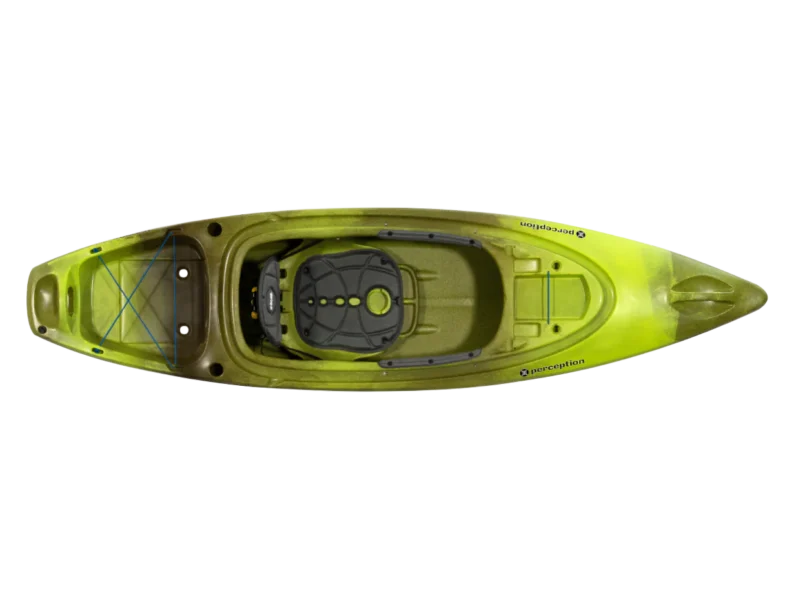
- Features: Comfortable seating, ample storage, and easy-to-use design.
- Pros: Lightweight, stable, and affordable.
- Cons: Limited speed and tracking.
- Price Range: $400-$500
Sun Dolphin Aruba 10
- Features: Adjustable padded seat, high-quality polyethylene build, and great stability.
- Pros: Durable, budget-friendly, and easy to handle.
- Cons: Basic features, less maneuverable.
- Price Range: $300-$400
Lifetime Lotus Sit-On-Top
- Features: Adjustable backrest, multiple footrest positions, and built-in swim-up deck.
- Pros: User-friendly, stable, and great for beginners.
- Cons: Limited storage, slower speed.
- Price Range: $250-$350
Touring Kayaks
Oru Kayak Bay ST
- Features: Foldable design, durable material, and excellent performance.
- Pros: Extremely portable, high-quality build, and great tracking.
- Cons: Higher price, requires assembly.
- Price Range: $1,200-$1,400
Perception Expression 11.5
- Features: Adjustable seat, spacious cockpit, and ample storage.
- Pros: Comfortable, versatile, and good speed.
- Cons: Heavier than other lightweight options.
- Price Range: $800-$1,000
Eddyline Skylark
- Features: Lightweight fiberglass, comfortable seating, and great stability.
- Pros: High-quality, excellent performance, and easy to transport.
- Cons: Higher price point.
- Price Range: $1,000-$1,200
Inflatable Kayaks
Intex Explorer K2
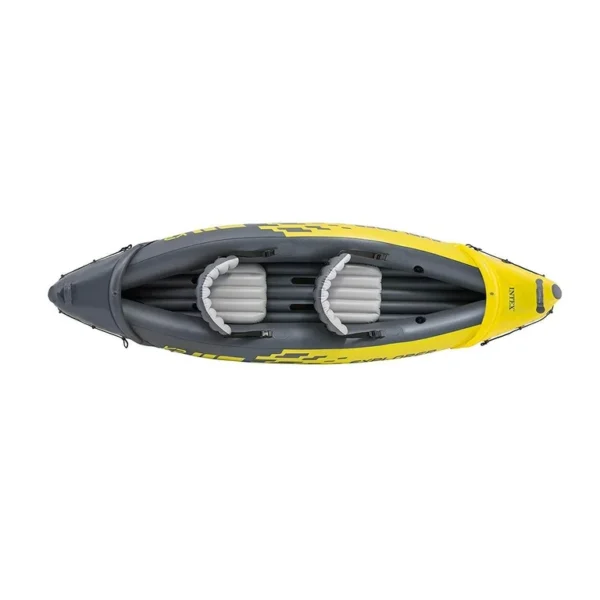
- Features: Inflatable design, comfortable seats, and useful accessories.
- Pros: Extremely lightweight, affordable, and easy to store.
- Cons: Less durable, limited speed.
- Price Range: $80-$120
Advanced Elements AdvancedFrame
- Features: Aluminum ribs, built-in rigid panels, and high-quality material.
- Pros: Great performance, easy setup, and portable.
- Cons: Higher price for an inflatable, requires maintenance.
- Price Range: $500-$700
Sea Eagle 330
- Features: Durable material, quick inflation, and stable design.
- Pros: Lightweight, easy to transport, and versatile.
- Cons: Limited storage, lower speed.
- Price Range: $200-$300
Sit-on-Top Kayaks
Ocean Kayak Malibu Two
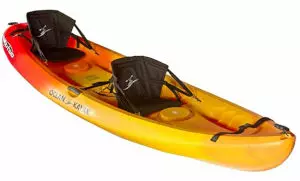
- Features: Tandem design, comfortable seats, and ample storage.
- Pros: Great for two paddlers, stable, and versatile.
- Cons: Heavier, less maneuverable alone.
- Price Range: $600-$800
Pelican Sentinel 100X
- Features: Lightweight design, adjustable seats, and multiple footrests.
- Pros: User-friendly, stable, and affordable.
- Cons: Limited speed, basic features.
- Price Range: $250-$350
Fishing Kayaks
Vibe Sea Ghost 110
- Features: Pre-installed rudder, ample storage, and comfortable seating.
- Pros: Great for fishing, stable, and well-equipped.
- Cons: Heavier, higher price.
- Price Range: $900-$1,100
Old Town Sportsman 106
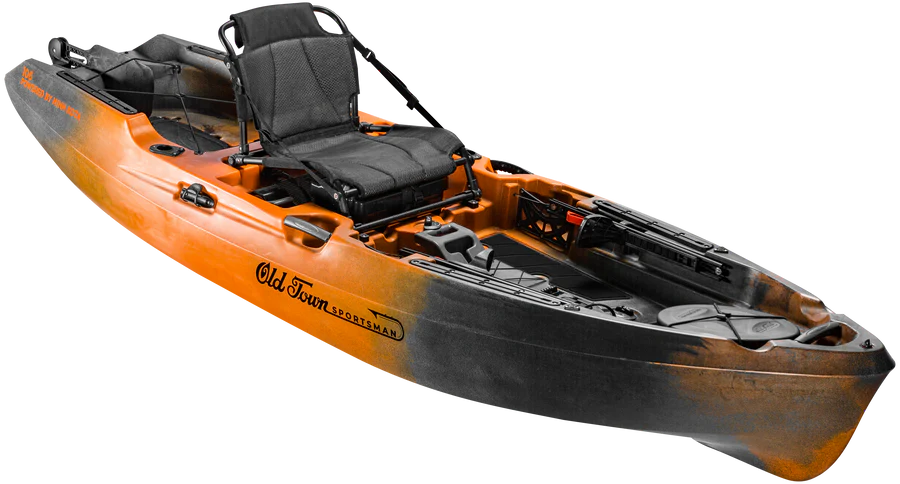
- Features: Lightweight design, plenty of storage, and fishing-friendly features.
- Pros: Easy to transport, stable, and great for anglers.
- Cons: Limited speed, basic features.
- Price Range: $800-$1,000
How to Maintain Your Lightweight Kayak
Cleaning Tips
Regular maintenance is key to keeping your kayak in top shape. After each use, rinse your kayak with fresh water to remove dirt, salt, and debris. Use mild soap and a soft cloth to clean the surface, and make sure to check for any signs of wear and tear.
Storage Advice
Proper storage extends the life of your kayak. Store it indoors or under a protective cover to shield it from the elements. If possible, use a rack or hang it to prevent deformities. Avoid prolonged exposure to direct sunlight, which can damage the material.
Repair Tips
Handle common issues and repairs promptly. Patch small holes with repair kits, and use marine-grade sealant for leaks. Regularly inspect your kayak for cracks, and address them quickly to prevent further damage.
Kayaking Tips for Smooth Sailing
Safety First
Kayaking is fun, but safety should always come first. Wear a life jacket, carry a whistle, and check the weather conditions before heading out. Inform someone about your trip plans and expected return time.
Paddling Techniques
Improve your paddling efficiency with these tips. Hold the paddle correctly, using a relaxed grip. Use your core muscles to paddle, which reduces strain on your arms. Practice different strokes, such as forward, reverse, and sweep strokes.
Trip Planning
Planning makes a successful trip. Choose a suitable location based on your skill level. Pack essential gear, including a first aid kit, water, and snacks. Familiarize yourself with the area and have a map or GPS device on hand.
Conclusion
Lightweight kayaks offer numerous benefits, including easy transport, better maneuverability, and versatility in various water conditions. When choosing a kayak, consider factors such as material, size, weight capacity, and additional features.
With the right lightweight kayak, smooth sailing is just a paddle away. Whether you’re exploring calm lakes or gentle rivers, these kayaks make every adventure more enjoyable. Happy kayaking!
Ready to find your perfect kayak? Explore our top picks and start your next adventure today.
Check out the other posts by kayaking experts:
Top 8 Sailor Kayaks for Thrilling Water Adventures
Best Hammerhead Kayak Guide: 7 Step-by-Step Beginner’s Guide
FAQs – Best lightweight kayaks
1. What makes a kayak lightweight?
A lightweight kayak typically weighs under 50 pounds and is constructed using materials like polyethylene, fiberglass, or inflatable materials that prioritize weight reduction without compromising on durability.
2. Why choose a lightweight kayak?
Lightweight kayaks are easier to transport to and from the water, making them ideal for solo paddlers or those with limited strength. They also tend to be more maneuverable and can enhance the overall paddling experience.
3. What types of kayaks are considered lightweight?
There are various types of lightweight kayaks available, including recreational kayaks, touring kayaks, inflatable kayaks, sit-on-top kayaks, and fishing kayaks. Each type is designed for different purposes and preferences.
4. How do I choose the right lightweight kayak for me?
Consider factors such as the type of kayaking you plan to do (recreational, touring, fishing), your skill level, weight capacity, and storage needs. Test paddling if possible can also help you determine comfort and handling.
5. Are lightweight kayaks less stable?
Not necessarily. Lightweight kayaks can still offer excellent stability depending on their design and intended use. Modern lightweight materials and construction techniques often prioritize stability along with weight reduction.
6. How should I maintain a lightweight kayak?
Regular cleaning, proper storage, and occasional maintenance checks are essential. Follow manufacturer guidelines for care and repair to ensure your kayak lasts for many seasons of enjoyable paddling.
7. Can lightweight kayaks handle rough waters?
While some lightweight kayaks are designed for calm waters and recreational use, others, such as touring kayaks, are built to handle more challenging conditions. Choose a kayak that matches the waters you plan to explore.
8. Are inflatable kayaks as durable as hard-shell kayaks?
Modern inflatable kayaks are constructed from durable materials like PVC or Hypalon, making them puncture-resistant and suitable for various conditions. They offer portability and easy storage without compromising on durability.
9. What safety precautions should I take when kayaking with a lightweight kayak?
Always wear a properly fitted life jacket, check weather conditions before heading out, inform someone of your plans, and carry essential safety gear such as a whistle and a first aid kit. Familiarize yourself with basic rescue techniques.
10. How can I improve my kayaking skills with a lightweight kayak?
Practice proper paddling techniques, take lessons or join a local paddling group for tips and support, and gradually increase your time on the water. The more comfortable you are with your kayak, the more enjoyable your paddling experiences will be.
Views: 2

